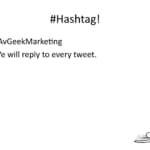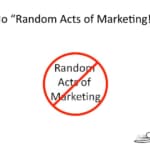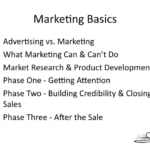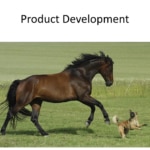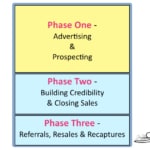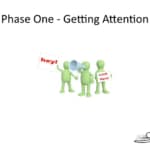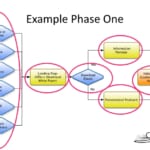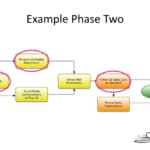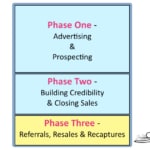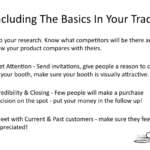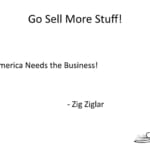The biggest aviation trade show marketing secrets are not really secrets. In fact, it’s those very things that you think should be SO OBVIOUS but NOBODY SEEMS TO DO THEM. In decades of attending aviation trade shows as a buyer, seller, and consultant, we see that maybe ten percent of companies actually do what they say they know they should do.
We named this episode “Aviation Trade Show ‘Secrets’,” kind of in jest, because everybody really should know this stuff, but nobody seems to actually DO it.
It drives me crazy walking around an aviation trade show floor, looking at the amount of money spent – wasted, actually, by companies who think they already know all this stuff but are THEY ARE DOING IT WRONG. 🙂
John and I can be pretty opinionated, and sometimes a litlte snarky when we feel like people aren’t listening to our advice. So, let’s get into it. . .
Transcript – Aviation Trade Show Marketing Secrets
[MUSIC]Announcer: You’re listening to aviation marketing Hangar Flying. The community for the best sales and marketing professionals in the aviation industry. You can’t learn to fly just from a book. You learn from other pilots who know the tools, the skills, and the territory. Your hosts, John and Paula Williams, are your sales and marketing test pilots.
They take the risks for you, ensure strategies, relevant example, hacks, and how tos. Be sure to subscribe on iTunes, so you won’t miss a thing.
Paula Williams: Welcome to aviation marketing Hangar Playing Episode number 36. The Top Secret Trade Show Strategy. We’re going to show that with you today. So I’m Paula Williams.
John Williams: I’m John Williams.
Paula Williams: And we are ABCI. And ABCI’s mission is-
John Williams: To help all you ladies and gentleman out there sell more products and services in the aviation world.
Paula Williams: Absolutely. So we’re using a hashtag if you want to join the conversation, if you have questions, comments, disagree with us about anything or anything else.
John Williams: Nobody would disagree with you.
Paula Williams: Heaven forbid.[LAUGH]
Paula Williams: Use the #AvGeekMarketing. We promise we will reply to every tweet on Twitter.
We also watch Instagram and Facebook so feel free to use those Hashtag. Hashtags don’t work on LinkedIn just so you know. Some people have tried that, they just don’t work very well so don’t bother with that but you can always comment to us on our post or on our company profile or anything like that if LinkedIn is your tool of choice as it is for John, we use that as well.
So, gentlemen this is a football.
John Williams: That sounded like Vince Lombardi.
Paula Williams: [LAUGH] That is Vince Lombardi. Every year, and he works with very, very talented, worked sorry. With very talented athletes who were the top of the scale in their schools, in their leagues and everything else so these are people that really really know their stuff.
John Williams: You can imagine this gang every year he does this and they’re going brother.
Paula Williams: Yeah.[LAUGH]
John Williams: But, his follow-on did really well and they’re winning streak was unbelievable.
Paula Williams: Exactly. So, he would start each group every year, each team every season with the basics and he would start with, this is a football, this is a sock.
This is how you put your socks on your feet so that you don’t get wrinkles in your socks. If you get wrinkles in your socks, you get blisters, if you get blisters, you lose practice time and if you lose practice time, you lose fractions of seconds off of your time.
In particular, things that you’re doing.
John Williams: And we lose games.
Paula Williams: And we lose games. Exactly. So, there is nothing wrong with learning the basics. And I think in marketing, a lot of people have never learned the basics, or when they have-
John Williams: Forgotten them.
Paula Williams: They kind of glossed over them because they want the nifty shiny new object or the latest technology or the coolest trick but today, we are telling you this secret strategy to doing trade shows well.
And the secret strategy to doing trade shows well is by attending to the basics. And if you feel disappointed because of that, I’m sorry. But I will tell you, having gone to a lot of trade shows and worked with a lot of clients, it is a secret strategy.
Nobody seems to know it, right? Nobody seems to do-
John Williams: Or at least they know it. They don’t use it.
Paula Williams: [LAUGH] Yeah, nobody seems to do the basics, right? So, the most basic thing in the world is to plan your marketing, right? We don’t want to have any random acts of marketing that’s always been our motto and we repeat that a lot.
But, marketing basics, right? First of all, let’s talk about advertising versus marketing.
John Williams: Now there’s a concept.
Paula Williams: Right, a lot of people think that advertising and marketing are the same thing.
John Williams: And there’s other people that get confused on which is the part of which other one.

Related note while you’re planning your next world takeover by trade show – Are Business Cards dead?
Paula Williams: Exactly, so we’ll talk about that today. We’ll talk about what marketing can and can’t do. We’ll talk about market research and product development. We will talk about phase one, getting attention or advertising. We will talk about phase two, building credibility and closing sales. And we will talk about phase three, after the sale.
Again today is just going to be a very brief overview of these basics. And there’s a lot more information on all of these things, on a lot of our other podcasts and other things. So feel free to dig in to any of these topics that you need more information about or again, you can tweet us and we’ll respond or email us the question.
All right, so, advertising versus marketing.
Paula Williams: Advertising is one of, in some cases, four, in some cases six, in some cases, eight components of marketing. Depending on what textbook you’re looking at. It’s usually the first thing in the cycle. Other than planning, the first thing the public sees anyway about your company.
So, the way that they see you for the first time or the way they come into contact with you for the first time is marketing or is advertising. But there’s other things in the practice of marketing and that is relationship building, sales, research. And then you come back to improve your advertising, improve your relationship building, improve your sales, improve your research.
John Williams: All subsets of marketing.
Paula Williams: Exactly. So, a lot of people say depending on how their organization is structured, they may have Sales and Marketing in two different departments. In my world, sales should report to marketing. Advertising should report to marketing.
John Williams: Absolutely.
Paula Williams: Relationship building and customer service should report to marketing and research of course should report to marketing.
So all of that stuff is part of the same business cycle. So, when people talk about marketing, they are not just talking about advertising unless you’re in the aviation industry. [LAUGH] In a lot of cases, a lot of people think that those two are synonymous, they’re really not.
John Williams: Well the sub-structure and who reports to whom that you allude to is only necessary if you’re interested in making sales.
Paula Williams: Right. [LAUGH] Exactly.
John Williams: Which is the object of any company.
Paula Williams: Exactly. So I mean if you’re interested in empire building or anything else, then you want to have as many departments as you possibly can.
But honestly, all of these activities really need to be coordinated. And that’s why we recommend that they all be in a single department. So all of those things are feeding information into each other. There really should not be silos. So, that is very, very important. We think you should actually start one ahead of this, one step ahead of what the public sees and that is with research.
Of course, you’re identifying your ideal target customer doing all of those things before you start building your advertising. A lot of people start with the idea, I need a brochure about my product. Your brochure is never about your product. Your brochure is about your customers, right? So that’s why you need to do the research ahead of time to make sure that you’re hitting the right target and that those are going to be effective.
Okay, so, under research, we have product development. So, a dog can’t win a horse race.
John Williams: Do you think?
Paula Williams: [LAUGH] That’s the thing, even the very best marketing is not going to help you if your product isn’t the same or better than your competitors. So, product development is really the first step and when we evaluate a new potential client for marketing consulting services We do what we call a competitive analysis and we look at their product and we look at the competitors on the market.
And unless there is some reason that their product is at least as good as the other products on the market or superior in some way for a particular audience set. Then we really don’t have a leg to stand on with our advertising and our marketing other than maybe hot air, right?
So we’re just pouring money into something that doesn’t have a chance of working. So product development is really the first step. And when you’re planning your trade show, you want to look at who are my other competitors that are going to be at that trade show and am I going to be a dog in a horse race?
If that is the case, don’t go to that trade show. Spend the time working on product development or find an audience that is going to see your product as the horse. Because it’s going to be superior for that particular audience, right?
John Williams: Yes.
Paula Williams: Okay, all right so, we are talking about marketing basics and this really is the very basics.
And this is our long cycle marketing formula. This is the secret sauce if there is one in our marketing system. So phase one, of course, advertising and prospecting, that’s the first thing that people see. When they come into contact with your company. And that includes all of the first bits of the trade show.
So the invitations to get to your booth, the signage, all of that stuff is advertising and prospecting. Phase two, building credibility and closing sales. This is the piece that is missing from most trade show campaigns, they think about what happens up until the show closes. But that is really when you are just getting started, so phase two is building credibility and closing sales.
In the aviation industry, we have an average sales cycle of about eight months from the time people first come into contact with us until the time that they actually sign a deal or write us a check, right? So if it’s going to be eight months from the time that they meet you at a show til the time that they ink a deal.
Chances are your competitors are going to approach them, they are going to have different priorities show up in their life. They’re going to have different budget considerations and other kinds of things. You really need to do what you can to make sure that you stay top in mind during that eight months.
And so that can be emails, that can be newsletters, that can be visits, phone calls, whatever that includes. Whatever that mix includes and we usually recommend more than one type of thing, right?
John Williams: Yes.
Paula Williams: [LAUGH] Some people are never going to open your emails but they will take a phone call.
Some people are never take a phone call but they will open a mailed newsletter.
John Williams: Of course, snail mail version.
Paula Williams: A snail mail letter version, which is your preference, right?
John Williams: Yeah, I prefer actually paper.
Paula Williams: So if you meet somebody at a trade show, how do you want them, and don’t actually is a pretty good demographic of our target customer for most aviation products.
But how do you prefer to be followed up with after a trade show?
John Williams: Are you talking to me?
Paula Williams: Yeah, I just asked you a question.
John Williams: I thought you were asking them a question.
Paula Williams: I said you are the target demographic for most of aviation products and services.
So you attend a trade show and you meet somebody for the first time, how would you prefer that they follow up with you?
John Williams: That’s interesting, it depends.
John Williams: Sometimes phone call, sometimes an email. Preferably, probably a phone call but if I really wanted to follow up, I want to know a business card and the phone number so I can plug it into my phone if I’m really serious.
Paula Williams: Great, so the most effective way to follow up with you after a trade show would be to give you a call or send you something in the mail.
John Williams: As a matter of fact, the last trade show I’ve asked somebody to give me a call and they did.
And I’ve had to put them off a couple of times, but I keep telling them to call back. Yeah I got their number and name in my phone, it’s just that the timing hasn’t been exactly correct for what I want to do yet.
Paula Williams: So why are you being so frustratingly awful to the sales person who’s trying to make a sale?
John Williams: No, I’m not being awful. I told him, I said there’s some things that I don’t know yet about this particular product that they’ve got that I really wanted just as soon as I can get my stuff together.
Paula Williams: Right, I understand that, and what I’m meaning by that is from a sales person’s perspective, that is really, really frustrating to have a customer say I’m not ready for it, call me back.
But that’s going to happen more often than not, especially in the aviation industry because there’s a lot of things beyond our control as buyers as well as our control as sellers, right?
John Williams: No different from the water softener guy I keep talking to.[LAUGH]
Paula Williams: [LAUGH] Tell me about that.
John Williams: I saw an ad somewhere and called him and they got a good product and we need to replace ours. But the timing isn’t when I want to do it right now because of our travel schedule and many other things and I just am not ready to do that.
Paula Williams: Right, exactly, so it’s not on the radar and it will be followed up with at the right time. But as we’ve said, the average time in aviation is about eight months. And that’s for a number of reasons and everybody got them. It’s either regulatory or travel or their busy season or financial or any other number of reasons that they just can’t do business with you right away.
So that phase two is incredibly important and I would say that’s where the vast majority of your competitors are going to fall off the map. So you know if there is a competitive advantage to be had and if they’re unspending you on advertising you can make it up here and based too by doing better follow up right?
John Williams: Yes.
Paula Williams: All right and then phase three resales, recaptures and referrals so what this have to do with trade shows?
John Williams: [LAUGH] Well guess what you’re going to do after you leave the trade show and you made a sale?
Paula Williams: Exactly. A lot of people don’t think about this as part of their trade show plan.
But one of the things that you want to put on your white board when you’re making your trade show plan is, how am I going to reconnect with each of my existing customers and maybe do a testimonial interview? Maybe see how they are doing, do a customer satisfaction survey, take them to lunch, buy them a cup of coffee.
You really want to spoil [LAUGH] your existing customers especially your largest and most important existing customers. You want to make sure that you visit their booth and maybe take a picture with them and put it on your social media and link to them. You want to do what you can to improve their visibility.
Because when they do better you do better.
John Williams: I’m going to interject something here that may not be completely relevant. But there’s a cost to the acquisition each and every customer.
Paula Williams: Right.
John Williams: And part of that is exactly what she talked about, coffee, dinner whatever.
Paula Williams: Absolutely, and a lot of people don’t invest in their existing customers because they think well that’s a done deal.
But while they’re at that trade show, your competitors are wining and dining them. And inviting them to their booth and showing them shiny new things. And you really need to stay in the running and not consider it a done deal.
John Williams: If you’re selling [INAUDIBLE] of course then it’s very infrequent that somebody’s going to buy one.
However, you want them top of mind when they hid another bird or lighting strike or something and knock another one off. So that you can.
Paula Williams: Mm-hm.
John Williams: Have that business as well.
Paula Williams: Exactly. So, phase three should be a really important part of your trade show plan and I would say, most companies spend 95% of their time and energy on phase one and they think that trade shows is just an advertising and prospecting activity to get new leads.
But I think you really need to split your time and energy at least 50 50. The 50% in Phase One and then the other 50% divided somehow between Phase Two and Phase Three depending on how many existing customers you have, depending on the repeat sales cycle that you have and other kinds of things.
And we can talk about that individually with you, depending on your circumstances, but a 50 50 split is usually pretty good and will outstrip your competitors really, really well on your Phase Two and Phase Three. Would you agree?
John Williams: Sure.
Paula Williams: All right, cool.
John Williams: Sometimes I agree with you.
Paula Williams: Sometimes you do. That is absolutely true. Okay, so let’s talk a little bit more about phase one. Actually this is going really badly.
Paula Williams: That’s okay, we can cut this bit out. So that will be fine. So an example, some examples of Phase One that you can connect to a trade show, you can put a landing page on your website where people can sign up to come to your booth at a particular time, you can do search engine optimization using the trade show as a keyword.
Sometimes there is a hashtag for that particular trade show you can use that as a keyword in your search engine optimization. That’s kind of a neat trick to get people to your website who are planning to attend that trade show and who are looking for things to do at that trade show or doing their own planning.
Another thing you can do is social media. You can put posts on your Facebook page saying come see us in boot 495 at this trade show.
John Williams: Don’t use the 495. Use your own booth number.[LAUGH].
Paula Williams: They wouldn’t do that![LAUGH]
Paula Williams: That’s crazy. You can do magazine advertisements to get people to your booth.
Or to follow up after, lots of ways to do that. Of course, the trade show appearance itself is an advertising or prospecting activity. You can send postcards, we do this a lot to prospects saying here’s a reason you should come to our booth at this trade show and have a really great call to action about your contest or your product demo or whatever it is that you’re using as a call to action to get people to your booth.
And referrals from current customers. You can say bring someone to our booth and you both get a box of chocolates or whatever the appropriate thing is to incentivize your current customers to come see you and also to bring their friends and neighbors from the show, right?
John Williams: Just don’t have something up there where you drop your business card in a fish bowl for a drawing for an iPad.
Paula Williams: [LAUGH] We talked a lot about that. That’s like our pet peeve about trade shows is where you have something that is really common and really not relevant to your product or service.
John Williams: I mean if you want to give away an iPad, that’s great. But don’t have them just put business cards in there.
Talk to them. Have them fill out a form with contact information. Find out how relevant they are as a customer or a potential customer for your business.
Paula Williams: Right, yeah, you want to qualify customers just a little bit before you start spending money on them. And a very good friend of ours has a really good formula for qualifying customers.
He uses the acronym MAN. Money, Authority, and Need. You know if they don’t have at least one of those things you really shouldn’t be including them in your contest. So ways that you can profile somebody for need at least is if they will spend ten minutes watching a product demo or if they will do a trivia quiz about your particular area of subject matter expertise.
Then this a person that’s interested in your product or service. You could say, for authority, you could say, this applies only to maintenance technicians. Only maintenance technicians can apply for this particular prize or something like that, so that you know that that person has the authority to do what you want.
Money, you really can’t judge, at lest not without being rude, [LAUGH] in a trade show. The fact that they happen to be at the trade show does have some kind of a barrier there. Because obviously, there’s somebody that’s investing in their company, or their company is investing for them to be there.
So you have a little bit of an indication that they do have the money end of things. So that’s money, authority, and need. If you can qualify at least one of those things, that will keep you from doing the random act of marketing involved with having a really, really stupid drawing or raffle, right?
Okay, so call to action at your booth. Do you want them to enter a contest? Do you want them to have you send them an information packet or a white paper after the show. You know, what can you offer them that gives them the reason to give you their contact information.
And you know, as John said, you don’t want them to just drop their business card in fish bowl, unless you’re going to qualify them in some way. All right. So then you want to send them something like a information package after the show and often we try not to give them too much literature at the show because a lot of that ends up in the convention center garbage cans.
Or the hotel room garbage cans. As people are trying to lighten their luggage to get home to wherever they came from. So if you giving people, especially something that’s fairly expensive, like an information package or a nice catalog or something like that, you want to make sure you send it to their office after the show, don’t just hand it to them from your booth.
John Williams: Yeah cuz there’s three ways they get either into the convention center trash, the hotel trash or it gets to the kids when they get home.
Paula Williams: [LAUGH] Right, how many times do you open your bag at the end of a convention and you get home to your kids and you look through all the markers and pens and fabulous little toys and erasers and things and you know the kids go to school the next day with a pile of new school supplies.
[LAUGH]John Williams: A treasure trove so to speak.
Paula Williams: A treasure trove exactly so that’s always fun. All right so some of your customers are going to be really, really qualified and you’re going to give them an information package. Some of them are going to be not quite so qualified and you can figure that out from their position or from the company that they work for.
Or from maybe the amount of interest that they demonstrated in the product in your booth. So maybe you have 100 information packages to give away and you give them to the most qualified people. And everybody else gets a personalized postcard That’s still not bad. They don’t know they’re being discriminated against.
[LAUGH] Right? They don’t know what everybody else is getting, so that’s perfectly fine to send something less expensive to some of your leads. And then you have your initial sales call. And we like to make those within a week of getting home from a trade show so that you remember who you are.And you’ll want to remind them of something that happened in the conversation or something like that. So you want to make sure you take good notes at the show so that these sales calls become much easier. Don’t let people see you do this because some people think it’s kind of rude.
But I like to take notes actually on a business card. You know, I will write a word or two about the conversation and the topic that we discussed or something that will remind me of the conversation that we had.
John Williams: And you particularly don’t want to write on a business card if an agent gives it to you.
Paula Williams: Well, we don’t want to be [LAUGH]
John Williams: Because that’s a real interesting concept to have the idea of business card.
Paula Williams: Right. There are some cultural considerations here that you want to make sure that you’re aware of. So, if you are at ABACE, ignore what I just said.
[LAUGH]Paula Williams: Take your notes in the notepad and make sure that you get to have that cross-referenced to your business cards. And that’s actually much more decorous way to make sure that those things happen. But, one way or another just make sure that you remember people really, really well, and you remember the conversations, that’s key to making those sales calls go well.
One lady that I know bends the corner of a business card. She bends the right corner if it’s somebody that is a really, really hot lead that she wants to follow up with. She bends the left corner if this is somebody that she never wants to talk to again.
And others are just left flat. So then she gets home and she has all these bent cards. But once again, you want to make sure nobody sees you do this for lots of reasons. Okay so that’s another secret. Okay phase two, building credibility and closing sales. This is putting the equation together and this is all about the customer, right, getting to know the customer what they want, what they need, what their timing is going to be, what considerations there are in the way of making that transaction.
So you know we talked about regular emails, printed mail, news letters, social media conversations connecting with them on LinkedIn. Sending them a direct mail promotion, here’s something that you expressed an interest in, we’re going to have a sale on that next month. Whatever you can do to continue that conversation.
And follow up calls as required and sometimes it takes six, eight, ten calls to make a sale. All right, so carrying on, phase three. Referrals, [LAUGH] resales and recaptures.
Paula Williams: If you have a product that people don’t like, you’re going to have a really hard time getting referrals, resales, and recaptures.
So, you want to make sure that your follow-up is good. You want to make sure that you’re doing a tip of the week or something like that so that they understand how to use it. You may want to do a walk-through especially if it’s a really technical product or a checkout.
John, when he bought one of the airplanes that had a G1000, the first one they made him do a three day. Three day?
John Williams: Yes, the three day checkout.
Paula Williams: Three day checkout to make sure that you knew what you were doing, before they turned you loose with this new, shiny new toy.
John Williams: Well, and this probably wasn’t a bad idea. I mean, I was a six pack guy, and I got an instant reading, and so forth. And all those, flew in the military. But it was always six pack, there was never any glass band. So it was a good thing.
Paula Williams: Right, so you want to make sure that people have a good chance of being happy with your product. And sometimes that doesn’t have anything to do with the product. It has to do with the training and other things. So you have potentially a new customer package. We have a lot material about that on our website.
You can Google new customer package or use the search window on ABCI site and find some great examples of aviation companies that do new customer packages really well. You can do a customer satisfaction survey, you can do trainings, you can do walk throughs, other kinds of things. You can do follow up calls, testimonial requests, thank you gifts, all kind of things after the sale.
And then, of course, those are more inclined to lead you to additional sales because you’ve taken really good care of your customers. And also when you plan out your trade show make sure you plan the time to go visit your existing customers at their booth and take a picture or at least shake their hand and make sure that they know that you cared enough to come see them.
John Williams: Or, you could take some existing customers, and potential customers to dinner.
Paula Williams: Exactly. Yeah, we’ve got a couple of articles and I think there is a podcast on customer service events that explain how you want to do a 70/30 mix or an 80/20 mix of happy customers and new prospects.
And your happy customers become your very best sales people because of how that works
John Williams: If you can arrange that at a trade show in advance that’s a really good thing.
Paula Williams: Yeah we’ve gone to a lot of those as prospects and as happy customers.[LAUGH]
John Williams: And we’ve had our own.
Paula Williams: Right.
John Williams: Where we’ve had happy customers and potentials.
Paula Williams: Right, exactly. Okay, so to wrap up including the basics in your trade show. You want to make sure that you do your research. Know what competitors will be there and how their product compares to yours. You want to get attentions and limitations give people a reason to come to your booth, make sure your booth is usually attractive.
We talked about going vertical you know hanging something from the ceiling or having banners that stick up so that people find you from a long way of way. Another thing that we didn’t talk about that we probably should is make sure that people can see from your booth what it is that you do.
You know, if you have ACME Aviation and a picture of a plan and you’re just standing there in a suit nobody can really tell what you do. You know do you do acquisitions? Do you do service do you make sure that it’s either in your name or in your banner or in your headline or something so that people can see from across the room why they would want to come talk to you.
John Williams: If you want a TV screen make sure it is awfully large.
Paula Williams: Yes.
John Williams: Because you can’t see it across the room.
Paula Williams: Yes, so that’s our Phase I, getting attention. Phase II, Credibility & Closing. Few people will make a purchase decision on the spot. Very few sales are actually made at trade shows.
You really want to put your money in the follow up so don’t spend from than 50% of your budget on advertising in the trade show itself. You want to put 50% also in your follow up phase two and phase three, right?
John Williams: And the ones you do hear about a trade shows were pre planned for publicity.
Paula Williams: Exactly, they didn’t actually just decide to buy 20 airplanes at the trade show. That’s something that was decided, negotiated on, and timed to take advantage of the publicity. Which you can do as well, but don’t be fooled by it and think that you’re going to make all these sales just by people who wake up, come to your booth, and decide to make a huge decision then and there.
It’s almost always going to be after the fact. And then you may be announcing it at next year’s trade show. All right, and then meet with current and past customers, this is your phase three. Make sure that they feel appreciated and taken care of. So make sure that you do that and include that in your trade show plan.
All right, so download your Trade Show Checklist from ABCI1.com, Alfa, Bravo, Charlie, India. 1.com/TradeShow and go sell more stuff.
John Williams: Yep, Mr. Zig Zaglar, America needs the business.
Paula Williams: Absolutely, subscribe to our podcast on iTunes, Stitcher or Google Play, and make sure you leave a rating. And we’ll see you next week.
Announcer: Thanks for joining us for aviation marketing Hanger Flying the best place to learn what really works in sales and marketing in the aviation industry.
Remember to subscribe on iTunes and leave a rating.
[MUSIC]
Aviation Trade Show Disasters and How to Avoid Them
Trade shows are a huge, and very powerful part of the marketing plans for MANY aviation companies. Of course, they are also a big investment. We talk about four common trade show mistakes and what to do instead.
Aviation Trade Shows – A Book Club Discussion – Trade shows by Steve Miller
Book club conversation – How to Get the Most out of Trade Shows by Steve Miller
Rich people have big libraries. Poor people have big TVs.
Jim Rohn
We discuss one popular book each month, from the perspective of the aviation industry!

